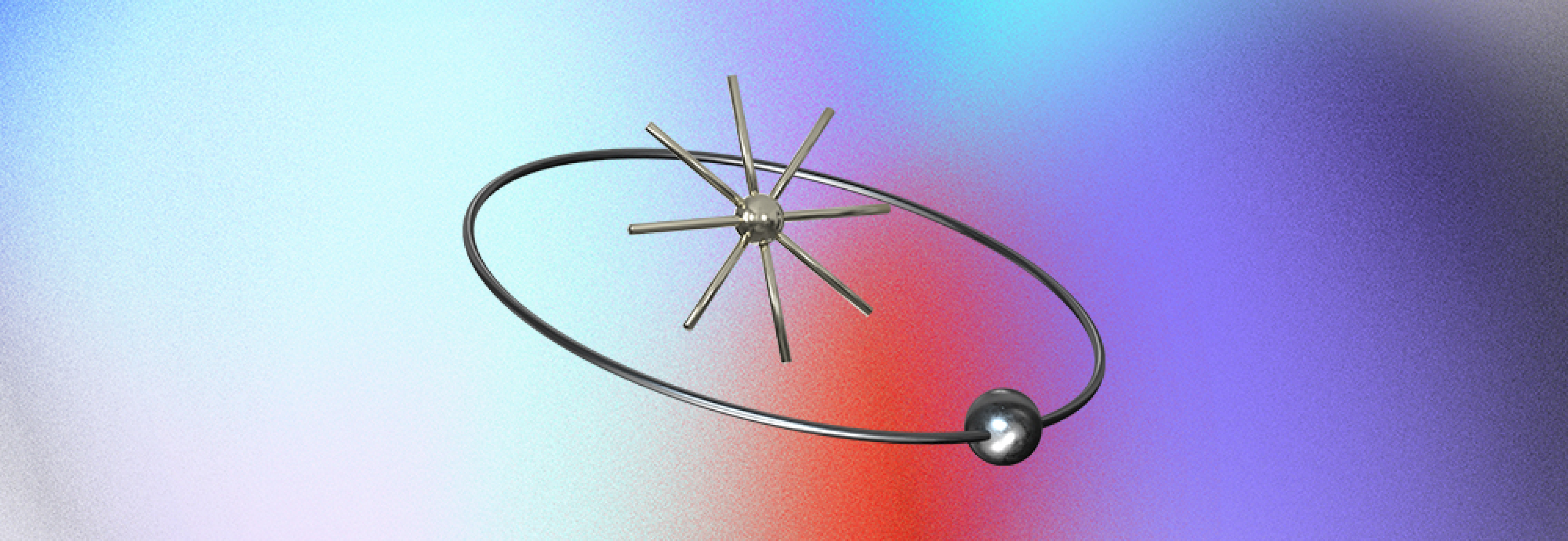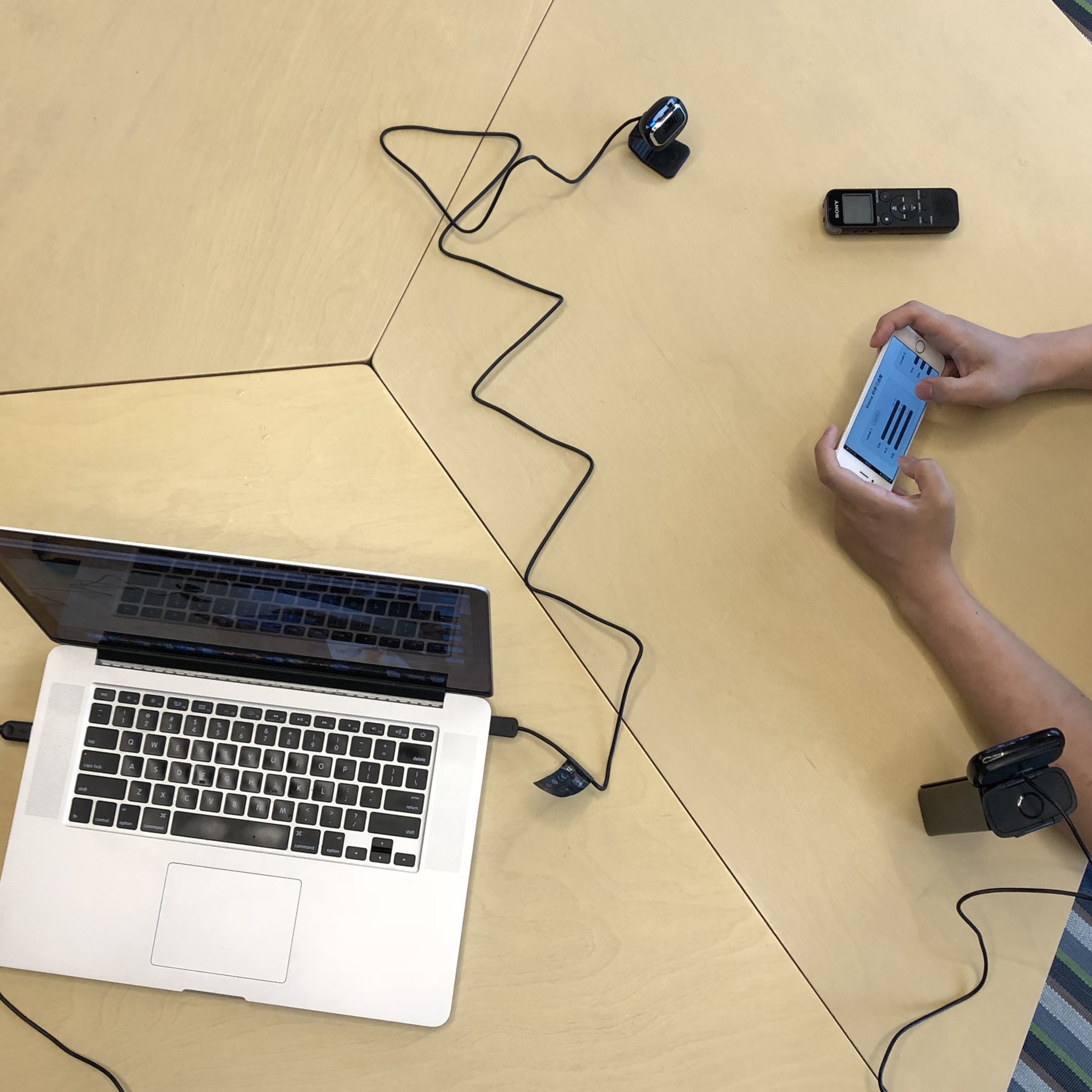As user experience is gaining significant popularity recently in China market, brands feel an urgent need to strengthen connections with consumers. In this battle of the brands, visual design – a crucial part of the process – is widely used to promote brand identity
Design is an iterative process that involves deep consideration at different stages. To reach our goal, we need to realize what methodology we are using and what barriers we may encounter at each stage. This article attempts to summarize our research practice and serve as a tool to help professionals as well as those simply interested in the field.
Now there are three vital questions: How to define brand style? How to visualize those styles? And finally, how to evaluate those design concepts that are widely accepted and favored by consumers?
Herein lies the secret of user-centered design: how to visualize an abstract brand style? In this context, the whole process of design research is divided into three parts: Style Keyword Definition, Visual Stimuli Collection & Analysis, and Visual Design Validation.
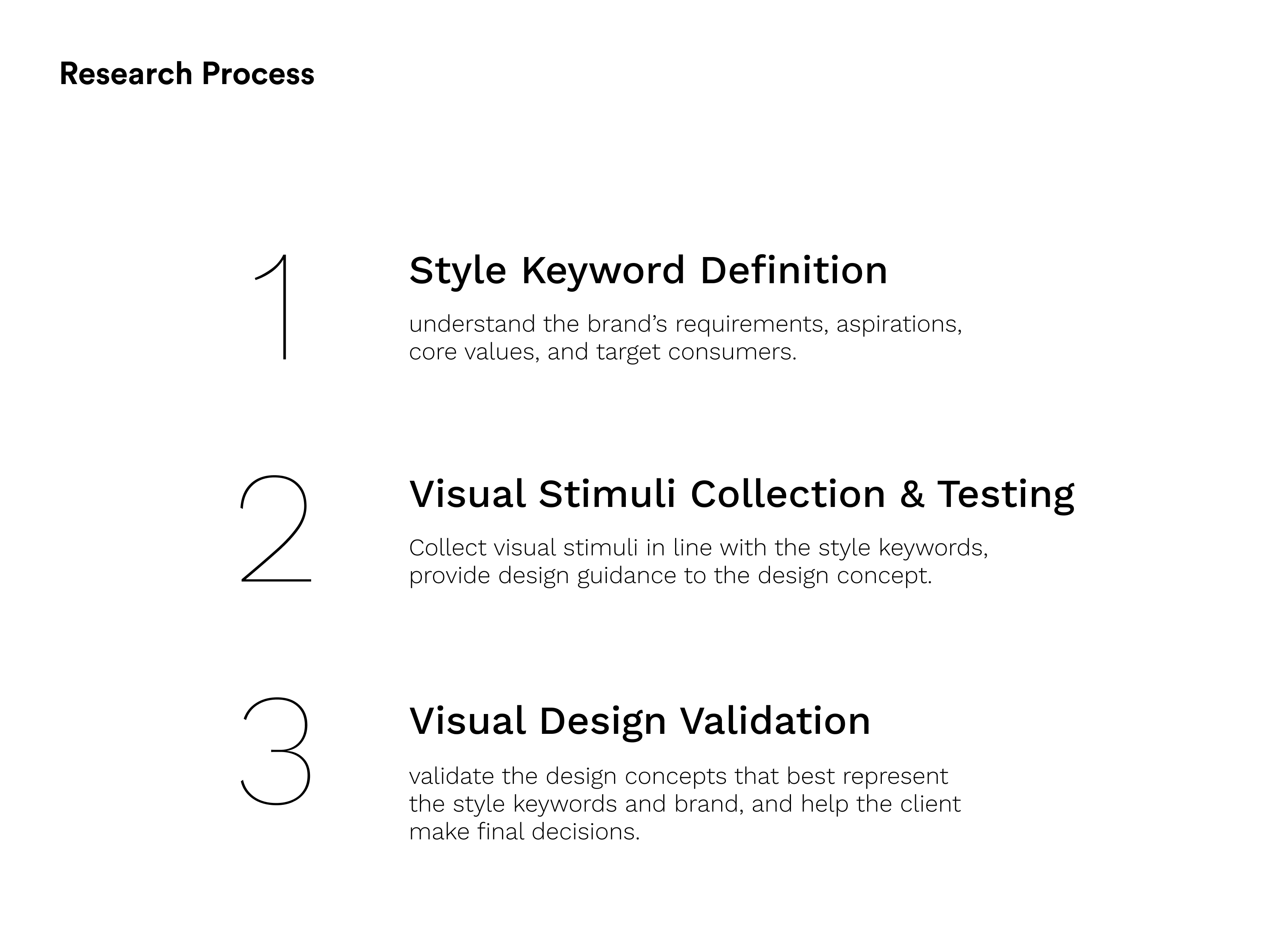
1.Style Keyword Definition
The goal of this stage is to help the brand refine three to four keywords to summarize its style. Two major factors need to be considered: the internal factors and the external ones. Internal factors mean the brand's own needs and positioning. We need to fully understand the brand's core values and its target users. These keywords to be refined should be closely related to brand DNA. As for the external factors, we need to think about brand differentiation, and what advantages make the brand stand out among other competing ones.
The common research methodologies we employ are:
- Stakeholder interviews
- Expert interviews
- Desktop research, such as competitive analysis.
Take sports brands as an example. A four-quadrant analysis is first adopted to sort brands into rough categories. After this step, the keywords will be refined based on those categories. Those refined keywords that best represent the brands' DNA are the North Star of the final design directions.
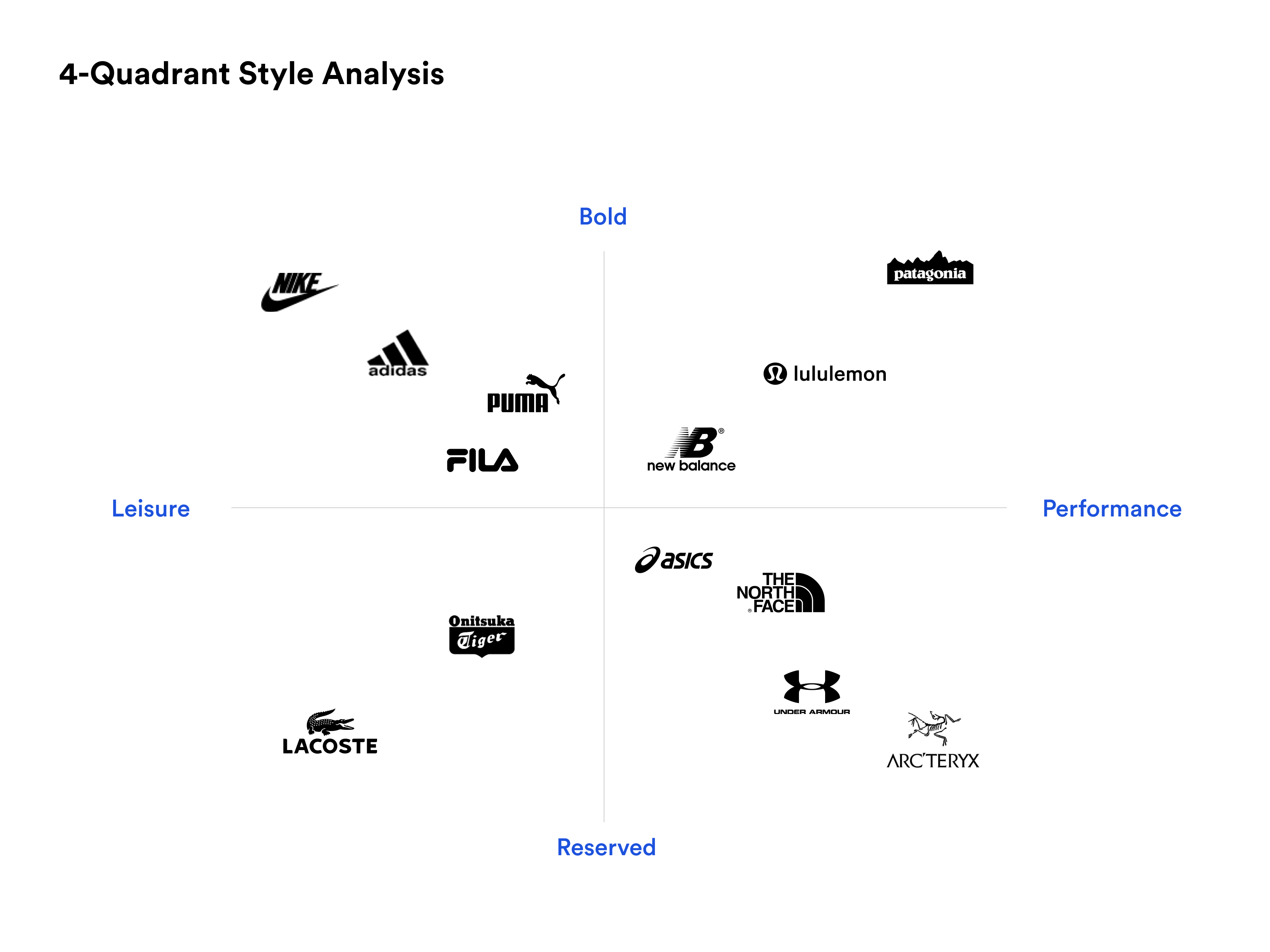
2.Visual Stimuli Collection & Analysis
What we do in this step is to visualize the keywords mentioned above. In order to gain insight into consumers’ perspectives, a target audience will be exposed to various visual stimuli. What matters most is to collect those visual stimuli that are related to the style keywords.
Here, we summarize 10 visual dimensions in the following context while considering the factors of shape, layout, light and shade, and motion. This methodology is widely used by Touch and also can be applied to motion graphics.
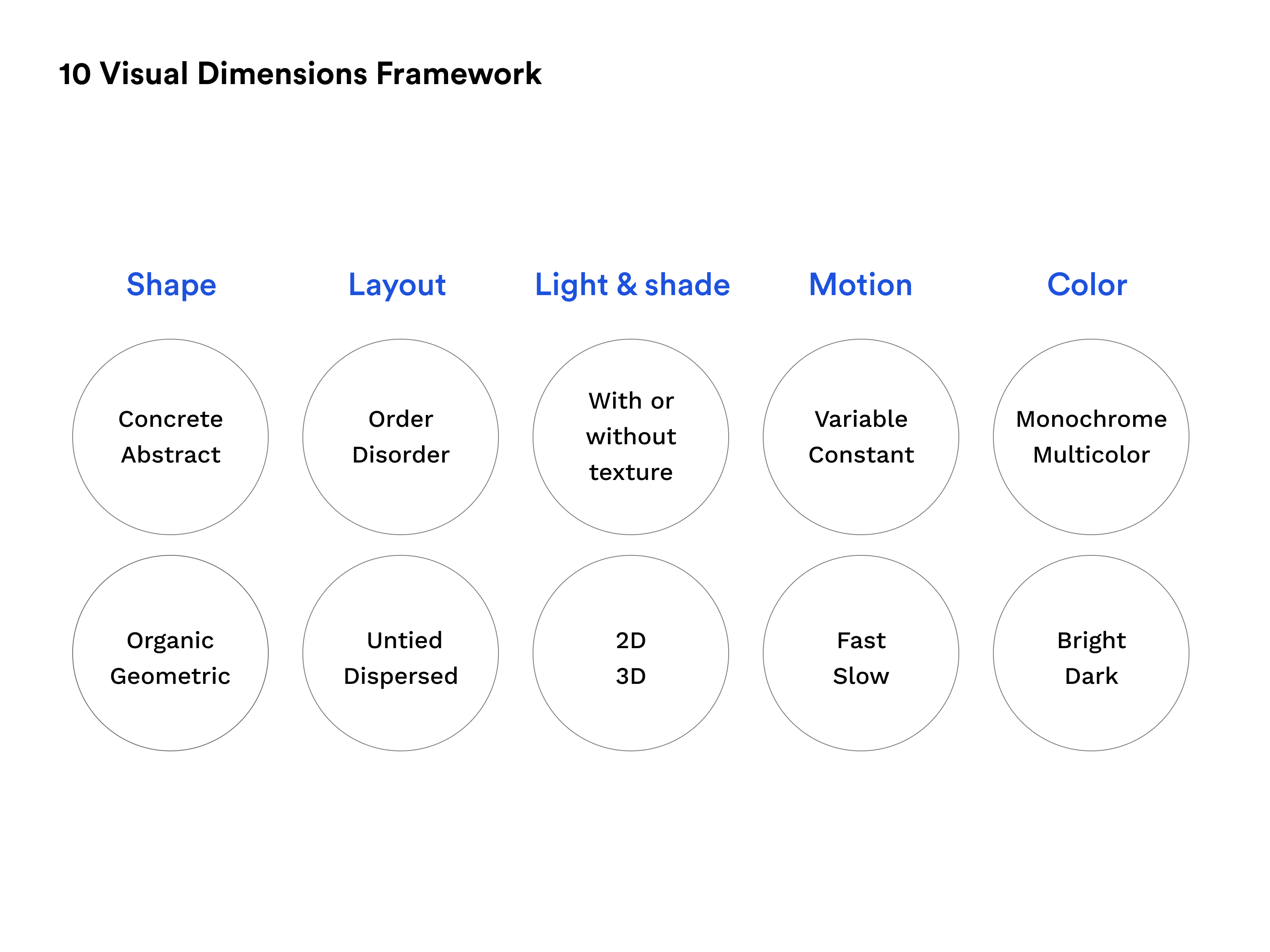
After the collection, the main tasks are:
- Expose those visual stimuli to the participants.
- Evaluate participants feedback. The most common methods we use are:
- Open-ended questioning: It allows participants to give a free-form answer. It's very suitable for exploration in qualitative research, especially for discovering factors that have not been considered yet.
- Closed questioning: Limit participant answers through structured questions so as to facilitate data gathering and analysis.
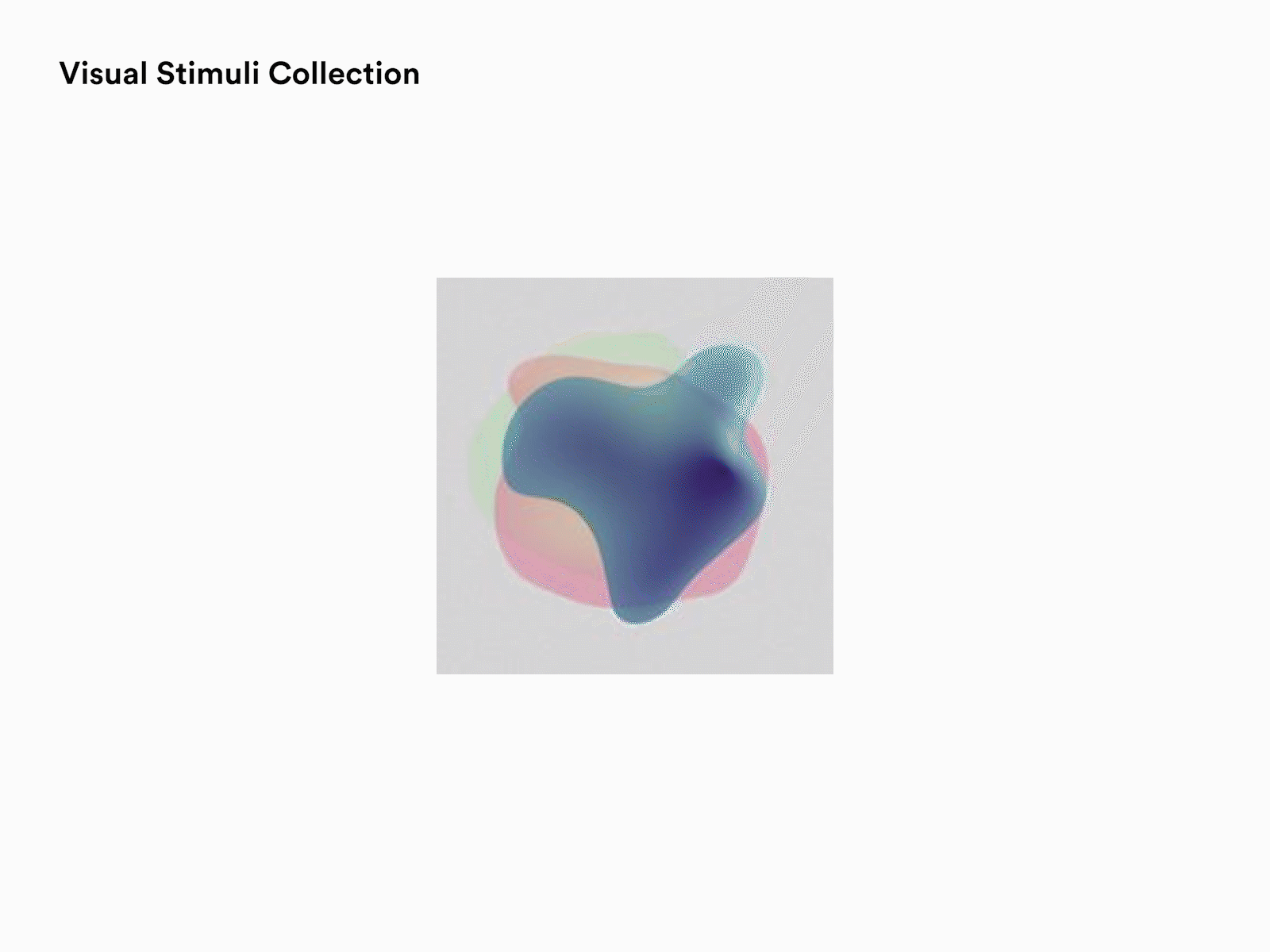
A visual design guide is generated at the end of this step, including design direction, style description, etc., which normally will be delivered to the design team.
3. Visual Design Validation
Multiple design concepts will be given by the design team based on the previous design guide. Now it's time to evaluate all the concepts that not only best represent brand identity but are also favored by target consumers. In the end, all the feedback will be collected and analysised to help clients make decisions.
So, the final question is how to perform a visual design validation?
It depends on the situation. (Considering the testing media, the budget, the location, etc.) One on one interviews or focus groups are mostly used. At this time, brand factors(such as competitive analysis) will be taken into consideration.
We recommend starting from the open-ended questions and proceeding to the closed ones. By doing so, we better understand participants’ perceptions and preferences – in all their aspects. The process is as follows:
1 Open-ended preference explanation Participants are asked to fully describe their feelings about the concept and give reasons for their opinions.
2 Open word Choice Participants are asked to describe each concept with 3-5 adjectives and explain their choices.
3 Card Sorting Participants will be provided a set of index cards, each with a descriptive word(usually an adjective). They need to select 5 cards that best describe the design concept.
These cards are universal and usually contain positive, neutral, and negative descriptions. Keep in mind that these cards need to be filtered when it comes to brand characteristics.
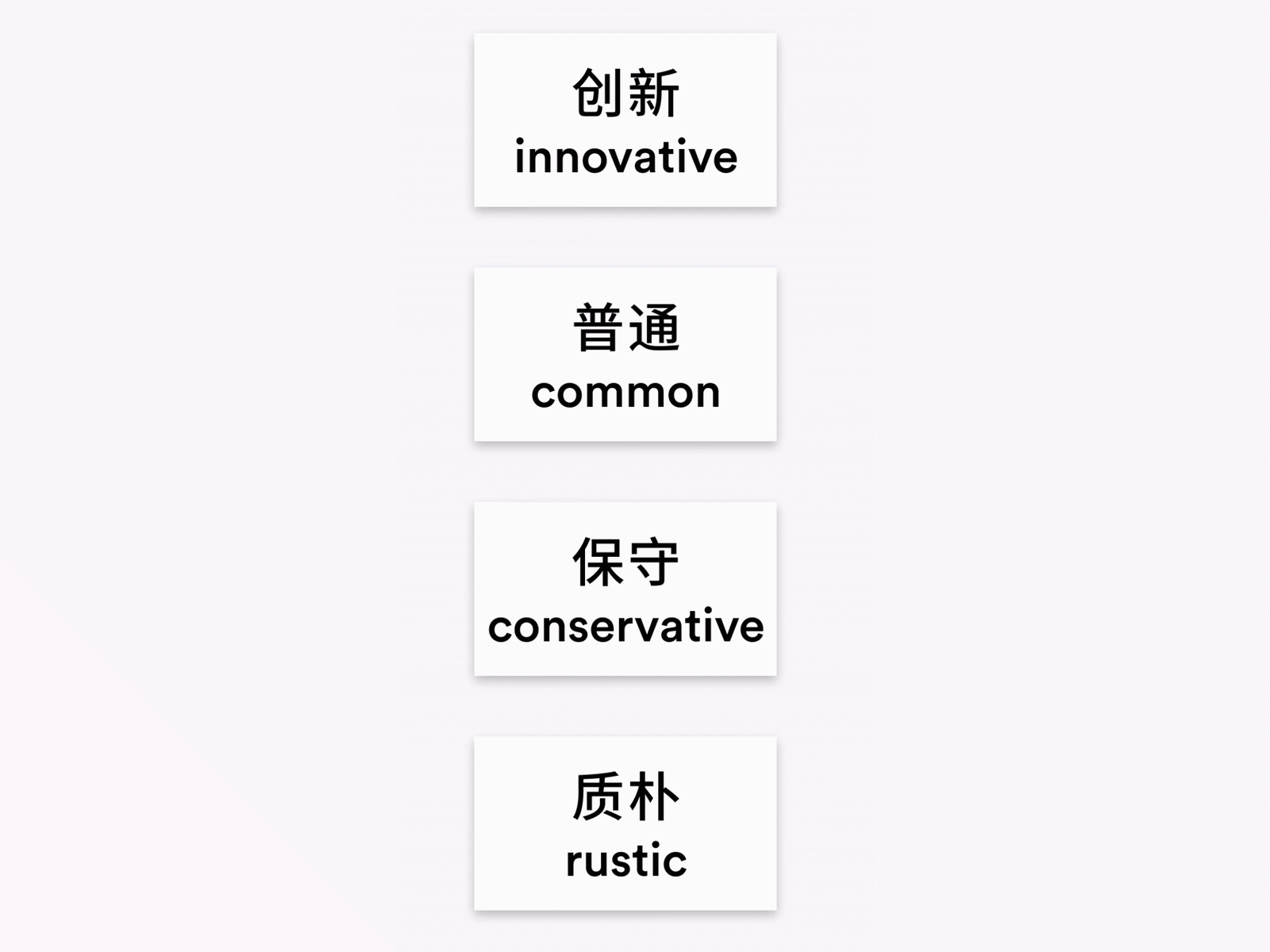
Researchers need to fully discern participants’ intentions. For example, for a certain design concept, a participant chooses the word 'Bold'. The researcher needs to ask the participant for further explanation to to confirm whether this adjective is positive and favored or meant as a criticism of an exaggerated trait.
Open Word Choice and Cart Sorting can generate intuitive reactions and feedback from target consumers and explain what design elements cause those reactions, which provides the design team with improvement ideas and further suggestions.
4. Numerical Rating of Brand Perceptions
Participants are asked to rate each design concept based on the given brand characteristics. The scores can directly reflect the level of brand fit but to a certain extent, it limits participants' points of view and reactions.
In order to avoid the testing time running too long, 3-5 brand characteristics are recommended during the interview. Competing products can also be covered in the testing. It helps us to understand how participants view different design languages and brand differentiation.
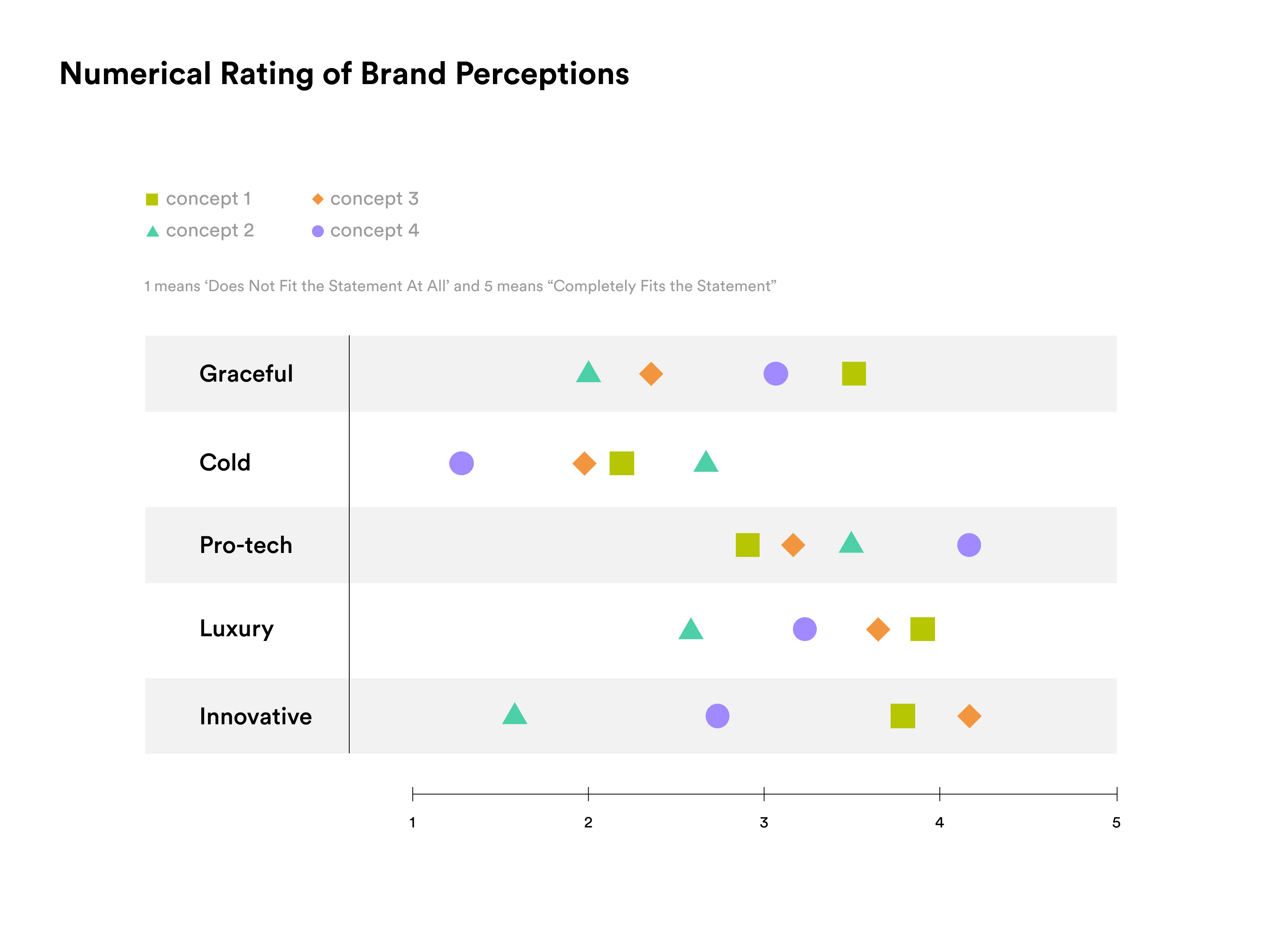
Through scientific research methodologies, abstract brand concepts can be vividly visualized. We expect to help companies understand consumers’ brand cognition within such research frameworks and provide valuable consumer insight as well as design guidance to clients.
Bibliography
Rohrer, C., 2008. Desirability Studies: Measuring Aesthetic Response to Visual Designs - XDStrategy. [online] XDStrategy. Available at: <https://www.xdstrategy.com/desirability-studies/> [Accessed 28 January 2021].
Whitenton, K., 2018. How to Test Visual Design. [online] Nielsen Norman Group. Available at: <https://www.nngroup.com/articles/testing-visual-design/> [Accessed 28 January 2021].
Moran, K., 2016. Microsoft Desirability Toolkit Product Reaction Words. [online] Nielsen Norman Group. Available at: <https://www.nngroup.com/articles/desirability-reaction-words/> [Accessed 28 January 2021].
